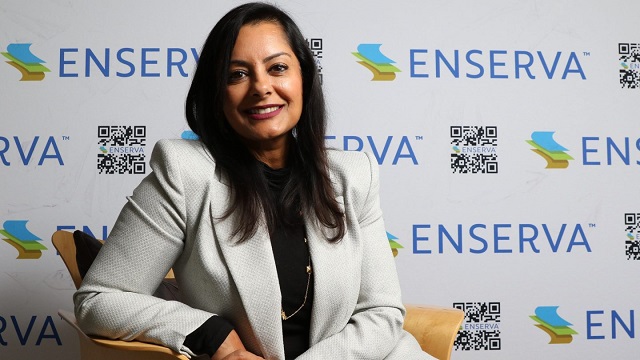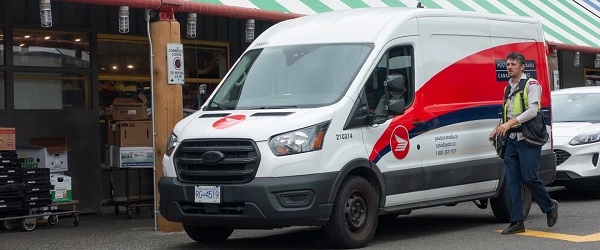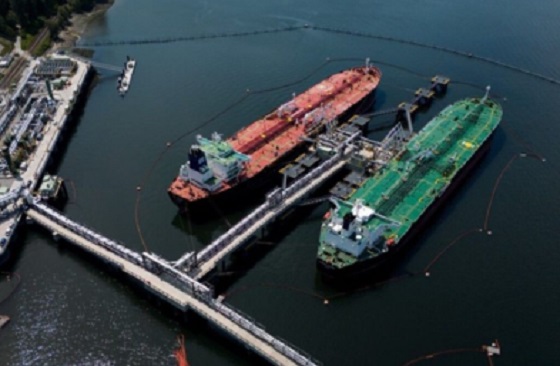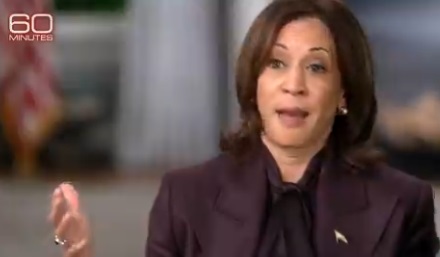Alberta
Enserva key to unlocking Canadian energy: CEO Gurpreet Lail

Photo for the Canadian Energy Centre by Dave Chidley
From the Canadian Energy Centre
By Cody Ciona“We are in the quality of life business, and that’s exactly what our business provides.”
A lawyer by education, with terms in high profile roles as executive director of STARS Air Ambulance and CEO of Big Brothers Big Sisters Calgary, Gurpreet Lail is no stranger to working in organizations dedicated to helping everyday Canadians.
Now two years into her term as the president and CEO of Enserva , formerly known as the Petroleum Services Association of Canada, Lail’s work continues to focus on improving quality of life.
She has no qualms about stating her support for the work the energy industry is doing.
“I will be the first one to say stop apologizing for the work we do, because the work that we do actually, no pun intended, fuels Canadians. We are in the quality of life business, and that’s exactly what our business provides.”
Enserva represents the service, supply and manufacturing sectors of the Canadian energy industry. This includes companies that supply hydraulic fracturing services to equipment suppliers and oilfield construction.
As the energy industry innovates towards more sustainable, low emissions products, she is confident that Enserva’s membership is more than up for the challenge.
“We are all moving to a new energy mix, and we all realize that as an industry we’re going to need new forms of energy to help us meet the demands of the future, especially when we look at global demand,” Lail says.
“Every company we represent has been diversifying their business to make sure we have a cleaner future. A lot of our companies are bringing in technology and artificial intelligence processes that are going to help streamline energy well into the future.

Photo for the Canadian Energy Centre by Dave Chidley
Enserva members are unlocking Canadian energy to make the world a better place, she says.
“They bring their services, they bring their supplies, they bring their manufacturing, globally.”
This includes technology used by drilling companies to replace their diesel fleets with natural gas power and other alternative energy sources, which reduces emissions while drilling wells.
“They just want to do good work, they want to make sure we can provide for Canadians, and they want to provide back into the community with community investments,” Lail says.
“You cannot go into rural Alberta or rural Canada and not see energy companies putting up community rinks or helping local hospitals or making sure your local Tim Hortons is still in business.”
Indigenous reconciliation is an ongoing process, and in Canada, where the oil and gas industry employs thousands of Indigenous workers across the country, she says working with those communities is crucial.
“It’s a good thing to do and it’s the right thing to do, and a lot of other industries aren’t quite thinking that way.”
In her eight years at STARS, Lail helped grow the organization to span three provinces and was a leading driver working with Enserva on the annual STARS & Spurs Gala. The event has raised over $20 million, 29 years and counting.
“STARS has become a fabric of our businesses; it helps save lives including those of our members, and we’re proud of that.”
In the ever-changing dynamic of Canada’s oil and gas industry, more women are finding themselves, like Lail, driving the conversation about Canadian energy.
“If there’s young women out there, or women in general I would always tell them to get involved and don’t shy away from coming into the sector,” she says.
Alberta
Alberta government records $8.3 billion surplus—but the good times may soon end

From the Fraser Institute
By Tegan Hill
According to last week’s fiscal update, the Smith government recorded a $8.3 billion surplus in 2024/25—$8 billion more than what the government projected in its original 2024 budget. But the good times won’t last forever.
Due largely to population growth, personal income tax revenue exceeded budget projections by $500 million. Business tax revenue exceeded budget expectations by $1.1 billion. And critically, thanks to relatively strong oil prices, resource revenue (e.g. oil and gas royalties) saw a $4.7 billion jump.
The large budget surplus is good news, particularly as it will be used to pay down government debt (which taxpayers must ultimately finance) and to invest for the future. But again, the good times could soon be over.
Recall, the Alberta government incurred a $17.0 billion budget deficit just a few years ago in 2020/21. And it wasn’t only due to COVID—until the recent string of surpluses, the government ran deficits almost every year since 2008/09, racking up significant amounts of debt, which still largely persists today. As a result, provincial government debt interest payments cost each Albertan $658 in 2024/25. Moreover, in February’s budget, the Smith government projected more deficits over the next three years.
Generally, Alberta’s fiscal fortunes follow the price of oil. Over the past decade, for example, resource revenue has been as low as $2.8 billion in 2015/16, while oil prices slumped to $US45.00 per barrel, and as high as $25.2 billion in 2022/23, when oil prices jumped to $US89.69 per barrel.
Put simply, resource revenue volatility fuels Alberta’s boom-and-bust cycle. In 2025/26, the West Texas Intermediate oil price will be a projected $US68.00 per barrel with projected resource revenue falling by $4.9 billion year-over-year.
But oil prices don’t need to dictate Alberta’s fiscal fortune. Indeed, if the Smith government restrains its spending, it can avoid deficits even when resource revenues fall.
There are plenty of ways to rein in spending. For instance, the government spends billions of dollars in subsidies (a.k.a. corporate welfare) to select industries and businesses in Alberta every year despite a significant body of research that shows these subsidies fail to generate widespread economic benefit. Eliminating these subsidies is a clear first step to deliver significant savings.
The budget surplus is undoubtedly positive for Albertans, but the good times could soon come to an end. To avoid deficits and debt accumulation moving forward, the Smith government should rein in spending.
Alberta
Alberta Provincial Police – New chief of Independent Agency Police Service

Sat Parhar has been appointed as the first chief of the Independent Agency Police Service, marking the next step toward a new municipal policing option.
The appointment of a new chief for the Independent Agency Police Service (IAPS) marks the next step in giving municipalities a new option for local policing and builds on the work already underway for the agency to assume the police-like duties currently carried out by the Alberta Sheriffs. The IAPS will empower municipalities to adopt strategies that effectively respond to their specific safety concerns, enhancing public safety across the province.
Chief Parhar brings more than 25 years of policing experience, including senior roles with the Calgary Police Service, most recently as deputy chief. His frontline policing experience and deep understanding of Alberta’s complex and diverse public safety landscape positions him to lead the agency as it takes shape and begins its work as a new municipal policing option, keeping communities safe.
Once operational, the agency will strengthen Alberta’s existing policing model and complement the province’s current police services, which includes the RCMP, Indigenous policing services and municipal police. It will help fill gaps and ensure law enforcement resources are deployed efficiently to meet Alberta’s evolving public safety needs and improve law enforcement response times, particularly in rural communities.
“Appointing Chief Sat Parhar is a key milestone in Alberta’s plan to give municipalities a real choice in how their communities are kept safe. This is about building a modern police service that reflects the priorities of Albertans, strengthens local decision-making, and ensures every corner of our province, especially rural areas, can count on responsive, effective law enforcement. With his decades of experience and deep understanding of Alberta’s policing landscape, he is the right leader to bring this vision to life.”
“This appointment signifies a significant step forward in our efforts to establish a more robust, community-focused policing model that is better equipped to meet the unique needs of our local residents. Under Chief Parhar’s visionary leadership, we are confident that we will develop a modern, efficient police service that not only enhances public safety but also aligns closely with the priorities and values of Albertans. His experience and commitment are vital in shaping an IAPS that is responsive, transparent, and dedicated to fostering trust and collaboration within the community, ultimately ensuring a safer and more connected society for all.”
Chief Parhar’s immediate priorities will be to hire an executive team and commence organizational planning such as developing key recruitment, training and other operational policies. Chief Parhar’s appointment is the first step of many to establishing the IAPS.
“It’s an honour to take on this role and help shape a modern police service built for Alberta. My focus from day one will be on setting high standards for professionalism, building strong relationships with our partners and ensuring this service reflects the needs and priorities of the communities we serve.”
The Independent Agency Police Service was formally created through regulation following the passing of Public Safety Statutes Amendment Act, 2024. The agency will operate as an independent Crown corporation, and will be renamed the Alberta Sheriffs Police Service, with its head office located in Calgary. The IAPS will be operationally independent from the provincial government with civilian oversight, consistent with all police services in Alberta.
“When it comes to policing, municipalities like ours deserve a choice – especially when the current system leaves us disadvantaged simply because of our size. We look forward to learning more about what that alternative will look like once an Alberta police agency is fully established and the options are clear. For us, this is about fairness, sustainability, and ensuring municipalities have access to policing solutions that reflect both their needs and their realities.”
Quick facts
- The regulation establishes the IAPS Provincial Corporation and its governance structure including board of directors, board of director powers, financial responsibilities and accountabilities.
Related news
- Expanding municipal police service options (April 7, 2024)
-

 Business2 days ago
Business2 days agoLatest shakedown attempt by Canada Post underscores need for privatization
-

 Business1 day ago
Business1 day agoWhy it’s time to repeal the oil tanker ban on B.C.’s north coast
-

 Aristotle Foundation2 days ago
Aristotle Foundation2 days agoHow Vimy Ridge Shaped Canada
-

 Alberta1 day ago
Alberta1 day agoPierre Poilievre – Per Capita, Hardisty, Alberta Is the Most Important Little Town In Canada
-

 Alberta1 day ago
Alberta1 day agoAlberta Provincial Police – New chief of Independent Agency Police Service
-

 Energy1 day ago
Energy1 day agoIf Canada Wants to be the World’s Energy Partner, We Need to Act Like It
-

 MxM News1 day ago
MxM News1 day agoUPenn strips Lia Thomas of women’s swimming titles after Title IX investigation
-

 International2 days ago
International2 days agoCBS settles with Trump over doctored 60 Minutes Harris interview







